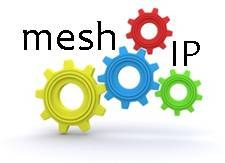 The cloud seems to be a prickly, double edged sword at the moment. Well, that’s if Steve Wozniak’s predictions of doom are to be believed. His belief that the cloud will bring “a lot of horrible problems in the next five years” seems to be at odds with the view of enterprises whose rapid adoption of cloud computing is reflected in Gartner’s predictions of a 48% increase in cloud services this year alone. While this polarisation of opinions is nothing new in the world of IT and often goes hand in hand with game changing technological innovation, the hype and confusion seem particularly frenzied where cloud is concerned.
The cloud seems to be a prickly, double edged sword at the moment. Well, that’s if Steve Wozniak’s predictions of doom are to be believed. His belief that the cloud will bring “a lot of horrible problems in the next five years” seems to be at odds with the view of enterprises whose rapid adoption of cloud computing is reflected in Gartner’s predictions of a 48% increase in cloud services this year alone. While this polarisation of opinions is nothing new in the world of IT and often goes hand in hand with game changing technological innovation, the hype and confusion seem particularly frenzied where cloud is concerned.
Whilst the promise of cloud computing to reduce costs, manage expansion and make the creation of new services easier is very real, we’re still in the early days of adoption. Organisations are still largely digesting what they’ve heard, sifting through the benefits, and weighing up the fears concerning its impact.
Matthew Finnie, CTO of Interoute believes that the despite the hype and misinformation the cloud offers real benefits for business. Below, he puts to bed some of the common myths and misunderstandings around the cloud:
- Myth 1 – Cloud computing isn’t right for everyone
How can this be true when 50% of all businesses already have some level of server virtualisation, and they already know it works? The fear felt by those that don’t think it is for them actually comes from equating the cloud to a public internet service that seeks to emulate a server. As with most things in life there are different types of service and organisations should look for one that runs real IT appliances and servers, and lets them define for themselves whether it’s private or public. - Myth 2 – You can’t trust the cloud
This is really about the cloud provider rather than the cloud. For example, if a provider won’t reveal where data is held, or whether it will stay in one location or move regions and even countries, then they clearly can’t be trusted. On the other hand, if they let the customer control where the data is, how it is moved, provide an SLA and have a track record of doing it for people they can relate to, then it is more than likely to work. - Myth 3 – The cloud is a fad
Unfortunately for those who profit from the current inefficiencies of IT; the cloud is definitely not a fad. Gartner revealed only last month that cloud services spending will nearly double from $3.4 billion in 2011 to $5 billion this year alone. We’ve seen too many similar shifts over the past 20 years to fail to recognise this one. As with connectivity and communication, computing will optimise in line with the way we create and consume content and services. - Myth 4 – The cloud doesn’t really change anything
This is true to some extent as the cloud doesn’t change what users can do, it changes the speed at which they can do it and where it can be done from. However, the biggest change is in an organisation’s pocket, the time it takes to develop service, performance and availability. - Myth 5 -There’s no future in the cloud
To understand the future we often look to the past. History says if we make things easier, reduce cost and improve performance we migrate readily. As a delivery model cloud computing will become the norm, and this is recognised by the world’s leading vendors who are focusing on optimising platforms for “as a service” delivery. Moreover, research from The Cloud Industry Forum this week revealed that in the last eighteen months the UK has seen a 27% increase in first time cloud users. We see in many businesses the contradictions of needing to preserve cash whilst also expanding, which throws up major challenges. The cloud eliminates that, creating an environment ripe for exploitation.
Author: Matthew Finnie
Source
- The Customer Edge Drives the Need for NaaS - June 25, 2023
- Blockchain Evolves And Secures - January 13, 2019
- Bessemer Ventures’ 2018 Cloud Computing Trends - February 25, 2018




